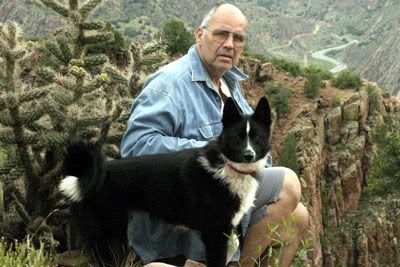Belle meets a Hairy Biped
One of my greatest joys is my Karelian Bear Dog, Belle. Karelians have been bred for hundreds of years in the region of Karelia, in Finland. They are used for hunting, specifically bear and moose. They are fearless, loyal and very energetic. I was after a squatchin’ partner with keen senses who could accompany me while doing field work.
I operate my recording gear from my backyard in Central Illinois 24/7. Recently I recorded the following sequence. Â Although the recording is no mystery, I thought it was still curious to hear how Belle goes on the alert to something she heard outside (she was napping on our bed inside the house). She begins barking and charges out the doggie door onto the upstairs deck. Getting more upset she is ready to charge when she realizes the intruder was me. She then runs down the steep stairs and goes into a joyful spate of crying and vocalizing.
If only my wife showed this much rejoicing when I returned home, (laugh out loud).
To listen to the sound clip, click here: Belle’s Surprise


